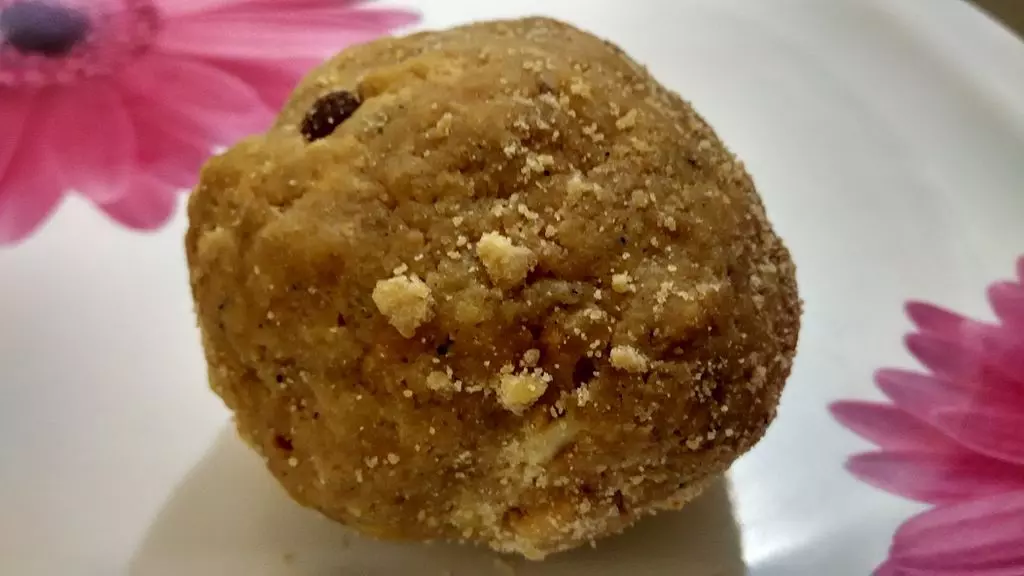A divinely distinct offering
The grant of the GI tag to Tirupati Laddu at the initiative of Tirumala Tirupati Devasthanam, on the grounds of preventing counterfeiting efforts, came after a legal battle and layered resistance from several quarters

Fourteen years ago, the Tirumala Tirupati Devasthanam (TTD), which runs the country’s richest temple at Tirupati in Andhra Pradesh, established its case to have a Geographical Indication (GI) or appellation for its Tirupati Laddu or Srivari Laddu — the Prasadam offered as Naivedyam to Lord Venkateswara at the Tirumala Venkateswara Temple. A pilgrimage to the temple town of Tirupati is considered incomplete without a halt at the Srivari Temple, and a visit to this place of worship is not complete until devotees have partaken of the Tirupati Laddu. The Laddu has a three-hundred-year-old history, for, as per the website of the TTD, the practice of offering Laddu to Lord Venkateswara started on August 2, 1715. The Laddu is given as Prasadam to devotees after having the ‘darshan’ in the temple.
By the turn of the century, the TTD had been receiving complaints that several confectionaries and sweetmeat shops in and around the temple town, and even in places as far as Chennai, had started offering Tirupati laddus or Tirupati-style laddus, which many devotees often partook under the impression that these too had first been offered as Prasadam to the Lord. Therefore, to ensure that the belief system and faith of devotees were not compromised, the Tirumala Tirupati Devasthanam applied for a geographical indication tag in 2008. The process was facilitated by CII’s Andhra Pradesh Technology Development and Promotion Centre (APTDC) to safeguard the Intellectual Property pertaining to the laddu. After an eighteen-month-long legal battle, it obtained the exclusive GI rights for Tirupati Laddus in 2009.
Three arguments were raised against the grant of GI for Tirupati Laddu. The first was that the TTD was “appropriating a religious/faith symbol for commercial use.” It was argued that income from the sale of Laddus was a substantial part of the TTD’s earnings. It was also argued that if the idea was merely to prevent the public from getting hoodwinked by those selling counterfeit laddus, the same could have been simply achieved by publicly declaring that the original laddus were available only within the temple precincts and not elsewhere.
Secondly, GIs were meant to benefit a community of local producers and act as an appellation or indicator of the geographical origin of the product. This would mean that everyone from Tirupati should have the right to use GI on “Tirupati Laddu” as long as their Laddu geographically originated in Tirupati and had the same taste and features attributable to the Laddu prepared by the temple trust. Thirdly, a GI tag primarily aims to promote the economic prosperity of producers of goods in a geographical area. In contrast, the GI registration of “Tirupati Laddus” had resulted in monopolistic rights to the name of “Tirupati Laddu” for one of the world’s richest religious institutions. The counter-petition averred that “Tirupati laddu” is made from ordinary ingredients such as flour, sugar, butter, cardamom, and dry fruits and does not possess any unique characteristic that sets it apart from regular laddus. It also does not have any distinctive feature specifically pertaining to the land of Tirupati or the TTD that cannot be found in the laddus prepared at other places.
However, the contention of the TTD was that the issue was not about the ingredients that went into the making of the Laddu but the fact that these had first been offered to the Lord. The Registry, and later the High Court of Madras, drew from section 9(d) of the Act which prohibits the registration of a geographical indication if the same could hurt the religious susceptibilities of any class of Indian citizens. However, the counterfactual to this was about rejecting an application from a religious body to uphold the faith and trust of the devotees in the Prasadam offered to the Lord in the sanctum sanctorum of the temple.
Now that the GI is in place, let us examine how the Laddu is made. The kitchen of the Lord, where the Laddu is made, is called Laddu Potu. It is located inside the Sampangi Pradakshinam of the temple. Given the volumes, the Potu is now equipped with three conveyor belts used for carrying ingredients into the Potu and moving the finished Laddus to the counters. Until 1984, only firewood was used to cook Laddus. It was replaced by LPG in 1984. TTD prepares an average of 2.8 lakh laddus a day in Laddu Potu, but for special occasions and during the Brahmotsav, it can make up to eight lakh pieces a day. Making the laddu is a work of art – one that requires extreme precision. According to the Ditam – the checklist of ingredients or recipe for the prasad – a 750-gram special laddu should have 23.5 grams of cashew, 12.5 grams of raisins, 8.2 grams of almonds, and 6.2 grams of sugar candy. The moisture content should not exceed 12 per cent. All of this is important to maintain the quality of the “Naivedyam, which is offered to the Lord five times a day.” The laddu is one of the permanent items on the Naivedyam menu, which includes other variable items like jalebi, dosa, vada, and seven varieties of rice-based dishes. Laddu is, of course, the most special!
The writer superannuated as the Director of the LBSNAA after 36 years in the IAS, and is currently a historian and policy analyst.



